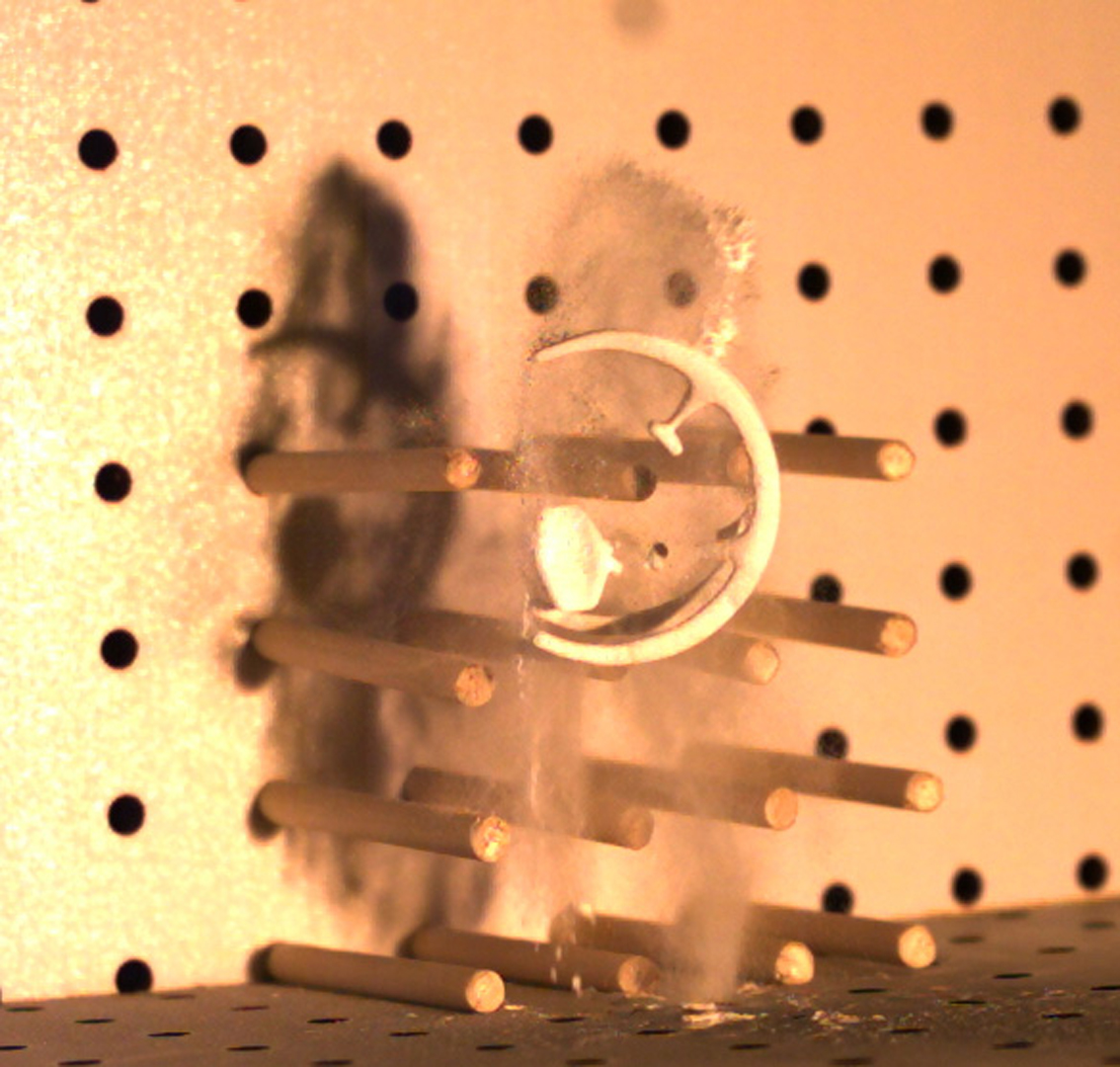“Worst-case structural analysis” by Zhou, Panetta and Zorin
Conference:
Type(s):
Title:
- Worst-case structural analysis
Session/Category Title: 3D Printing
Presenter(s)/Author(s):
Moderator(s):
Abstract:
Direct digital manufacturing is a set of rapidly evolving technologies that provide easy ways to manufacture highly customized and unique products. The development pipeline for such products is radically different from the conventional manufacturing pipeline: 3D geometric models are designed by users often with little or no manufacturing experience, and sent directly to the printer. Structural analysis on the user side with conventional tools is often unfeasible as it requires specialized training and software. Trial-and-error, the most common approach, is time-consuming and expensive.We present a method that would identify structural problems in objects designed for 3D printing based on geometry and material properties only, without specific assumptions on loads and manual load setup. We solve a constrained optimization problem to determine the “worst” load distribution for a shape that will cause high local stress or large deformations. While in its general form this optimization has a prohibitively high computational cost, we demonstrate that an approximate method makes it possible to solve the problem rapidly for a broad range of printed models. We validate our method both computationally and experimentally and demonstrate that it has good predictive power for a number of diverse 3D printed shapes.
References:
1. ASTM. 2007. D5023-07 standard test method for plastics: Dynamic mechanical properties: In flexure (three-point bending). In American Society for Testing and Materials.Google Scholar
2. Bächer, M., Bickel, B., James, D. L., and Pfister, H. 2012. Fabricating articulated characters from skinned meshes. ACM Trans. Graph. 31, 4 (July), 47:1–47:9. Google ScholarDigital Library
3. Barbič, J., and James, D. L. 2005. Real-time subspace integration for st. venant-kirchhoff deformable models. ACM Trans. Graph. 24, 3 (July), 982–990. Google ScholarDigital Library
4. Barbič, J., and James, D. L. 2010. Subspace self-collision culling. ACM Trans. Graph. 29, 4 (July), 81:1–81:9. Google ScholarDigital Library
5. Bickel, B., Bächer, M., Otaduy, M. A., Lee, H. R., Pfister, H., Gross, M., and Matusik, W. 2010. Design and fabrication of materials with desired deformation behavior. ACM Trans. Graph. 29, 4 (July), 63:1–63:10. Google ScholarDigital Library
6. Calì, J., Calian, D. A., Amati, C., Kleinberger, R., Steed, A., Kautz, J., and Weyrich, T. 2012. 3d-printing of non-assembly, articulated models. ACM Trans. Graph. 31, 6 (Nov.), 130:1–130:8. Google ScholarDigital Library
7. Davis, T. 2004. Algorithm 832: Umfpack v4. 3—an unsymmetric-pattern multifrontal method. ACM Transactions on Mathematical Software (TOMS) 30, 2, 196–199. Google ScholarDigital Library
8. Dong, Y., Wang, J., Pellacini, F., Tong, X., and Guo, B. 2010. Fabricating spatially-varying subsurface scattering. ACM Trans. Graph. 29, 4 (July), 62:1–62:10. Google ScholarDigital Library
9. Elishakof, I., and Ohsaki, M. 2010. Optimization and anti-optimization of structures under uncertainty. World Scientific.Google Scholar
10. Ewins, D. 2000. Modal testing: theory, practice and application, vol. 2. Research studies press Baldock.Google Scholar
11. Fidkowski, K., Kroo, I., Willcox, K., and Engelson, F. 2008. Stochastic gust analysis techniques for aircraft conceptual design. AIAA paper 2008–5848.Google Scholar
12. Hauser, K., Shen, C., and O’Brien, J. 2003. Interactive deformation using modal analysis with constraints. In Graphics Interface, vol. 3, 16–17.Google Scholar
13. Hašan, M., Fuchs, M., Matusik, W., Pfister, H., and Rusinkiewicz, S. 2010. Physical reproduction of materials with specified subsurface scattering. ACM Trans. Graph. 29 (July), 61:1–61:10. Google ScholarDigital Library
14. Kou, X., and Tan, S. 2007. A systematic approach for integrated computer-aided design and finite element analysis of functionally-graded-material objects. Materials & design 28, 10, 2549–2565.Google Scholar
15. Lehoucq, R., Sorensen, D., and Yang, C. 1998. ARPACK users’ guide: solution of large-scale eigenvalue problems with implicitly restarted Arnoldi methods, vol. 6. SIAM.Google Scholar
16. Luo, L., Baran, I., Rusinkiewicz, S., and Matusik, W. 2012. Chopper: partitioning models into 3d-printable parts. ACM Trans. Graph. 31, 6 (Nov.), 129:1–129:9. Google ScholarDigital Library
17. Mosek, A., 2010. The mosek optimization tools manual. version 6.0., 2010.Google Scholar
18. Nickell, R. 1976. Nonlinear dynamics by mode superposition. Computer Methods in Applied Mechanics and Engineering 7, 1, 107–129.Google ScholarCross Ref
19. Pentland, A., and Williams, J. 1989. Good vibrations: modal dynamics for graphics and animation. SIGGRAPH Comput. Graph. 23, 3 (July), 207–214. Google ScholarDigital Library
20. Pratt, M., Marsan, A. L., Kumar, V., and Dutta, D. 1998. An assessment of data requirements and data transfer formats for layered manufacturing. Tech. rep., National Institute of Standards and Technology.Google Scholar
21. Shapeways, 2011. Things to keep in mind when designing for 3d printing..Google Scholar
22. Si, H. 2007. Tetgen: A quality tetrahedral mesh generator and a 3d delaunay triangulator. Weblink: http://tetgen. berlios.de/(accessed on: March 31, 2012).Google Scholar
23. SolidWorks, 2011. Solidworks simulation reference, 2011. http://help.solidworks.com/2011/english/SolidWorks/cworks/LegacyHelp/Simulation/Materials/Material_models/Linear_Elastic_Orthotropic_Model.htm.Google Scholar
24. Stava, O., Vanek, J., Benes, B., Carr, N., and Měch, R. 2012. Stress relief: improving structural strength of 3d printable objects. ACM Trans. Graph. 31, 4 (July), 48:1–48:11. Google ScholarDigital Library
25. Telea, A., and Jalba, A. 2011. Voxel-based assessment of printability of 3d shapes. In Proceedings of the 10th international conference on Mathematical morphology and its applications to image and signal processing, Springer-Verlag, Berlin, Heidelberg, ISMM’11, 393–404. Google ScholarDigital Library
26. Timoshenko, S., and Woinowsky-Krieger, S. 1940. Theory of plates and shells. Engineering Societies Monographs, New York: McGraw-Hill.Google Scholar
27. Umetani, N., Igarashi, T., and Mitra, N. J. 2012. Guided exploration of physically valid shapes for furniture design. ACM Trans. Graph. 31, 4 (July), 86:1–86:11. Google ScholarDigital Library
28. Z CORPORATION, 2011. Architectural design guide – printing 3d architectural models.Google Scholar
29. Zeiler, T. 1997. Matched filter concept and maximum gust loads. Journal of aircraft 34, 1, 101–108.Google ScholarCross Ref





